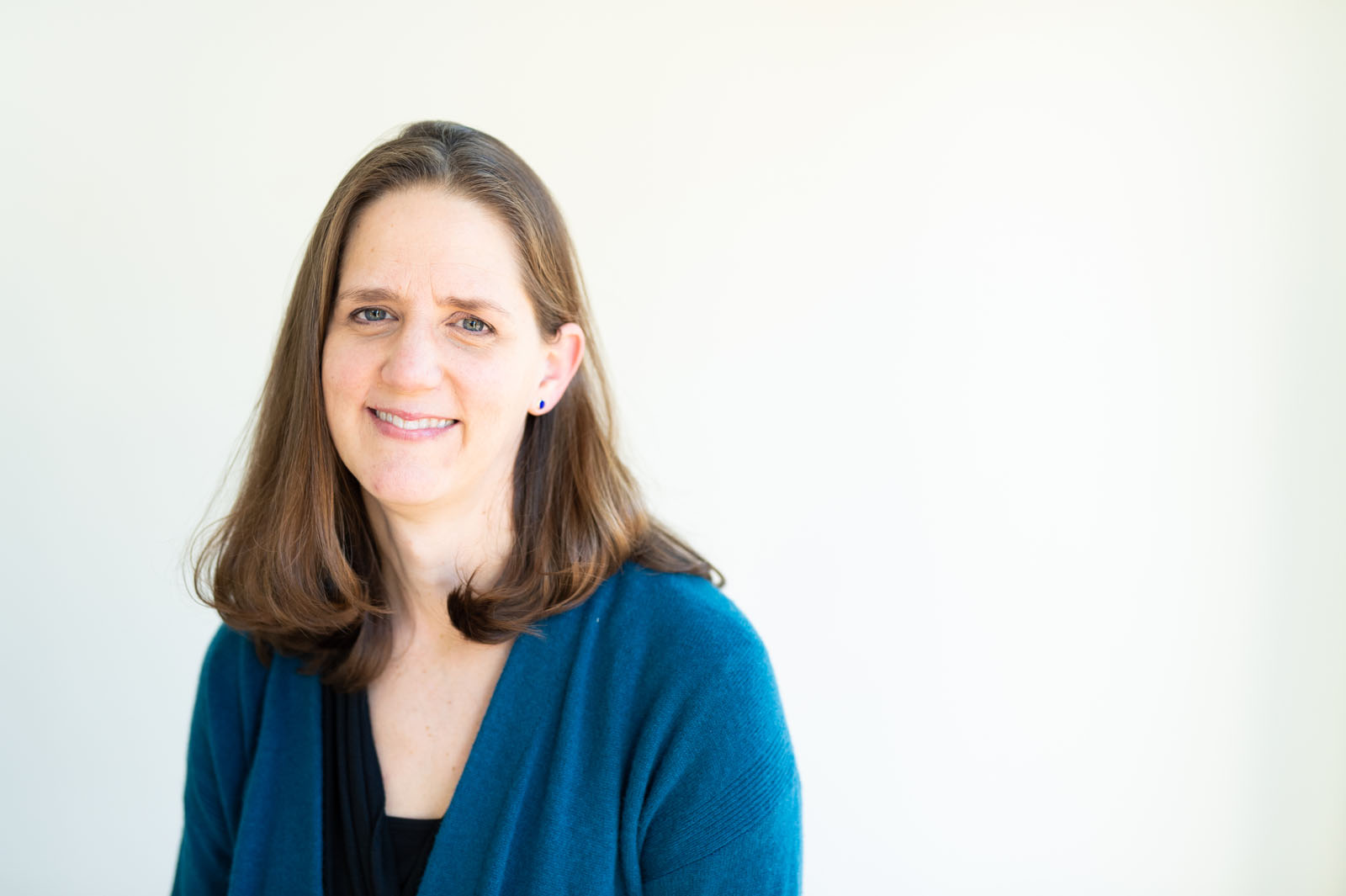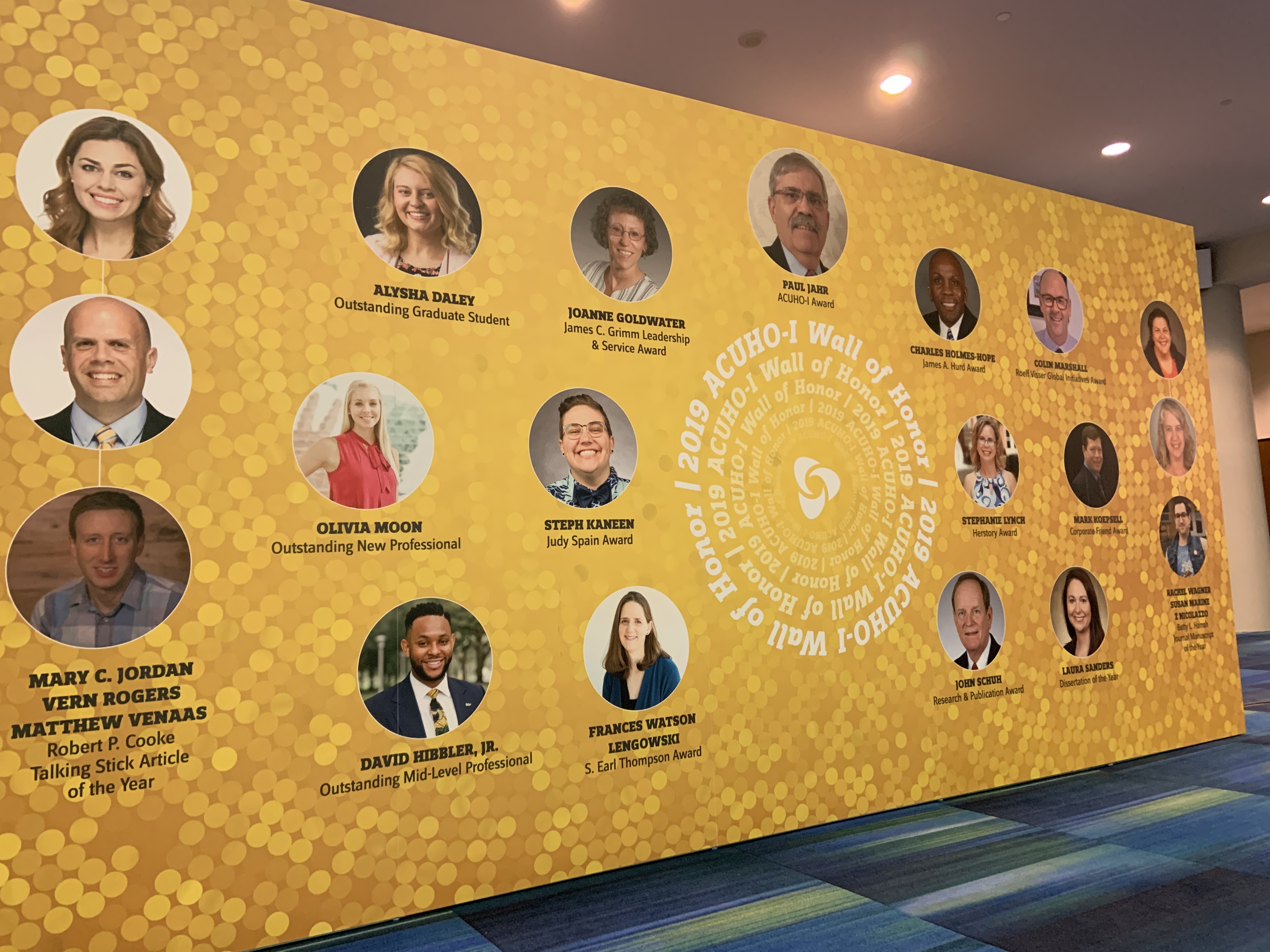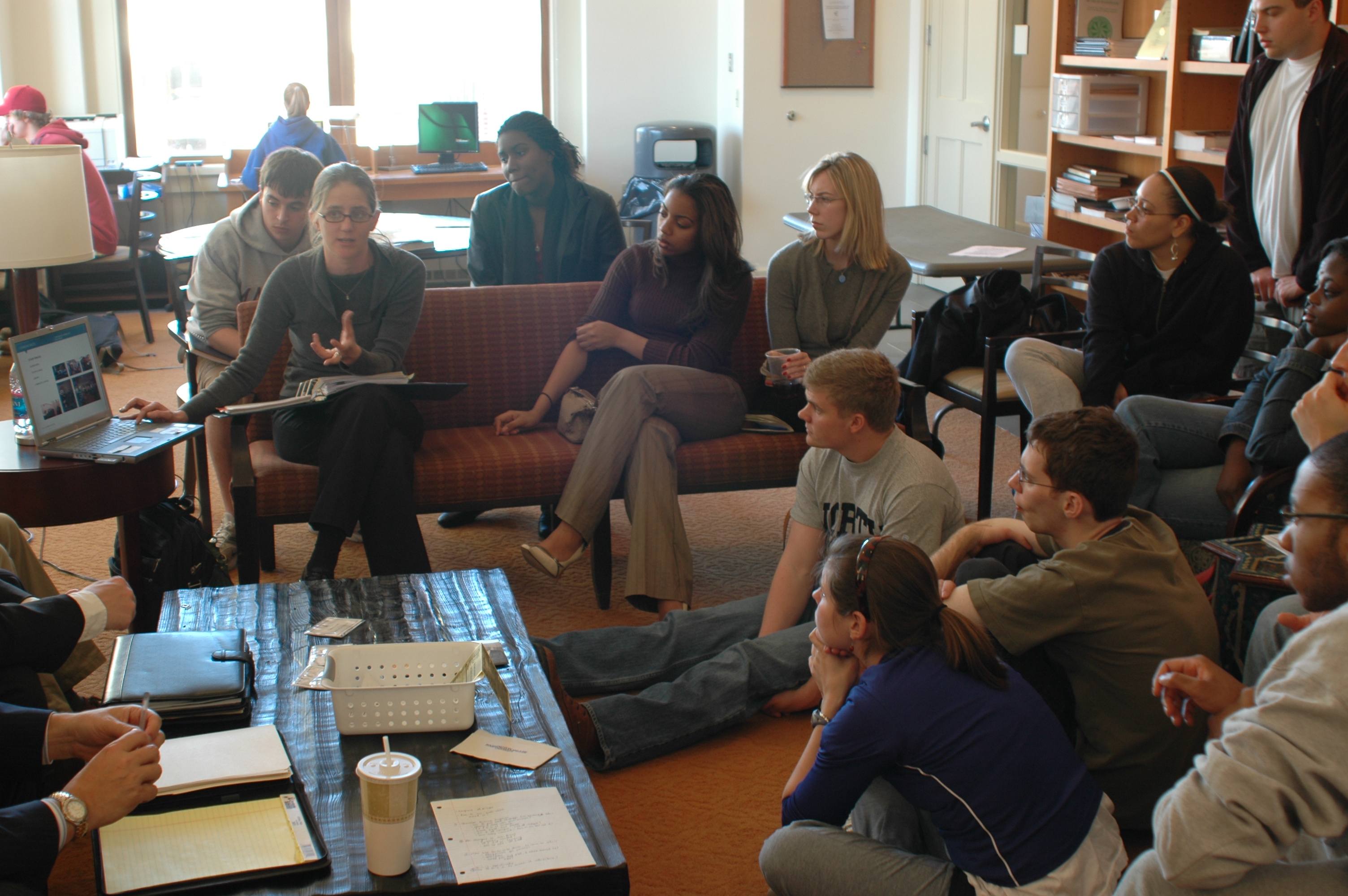VMDO’s Frances Lengowski received the 2019 S. Earl Thompson Award from ACUHO-I (Association of College and University Housing Officers - International) at their annual conference. The award “recognizes an individual who is not directly related to ACUHO-I, but who has made a significant contribution to the campus housing field” through an outstanding track-record of collaborating and supporting this association. Frances has been involved with ACUHO-I for over a decade – she has presented at several conferences, served as the Chair of the Sustainability Committee, and has written many articles for their Talking Stick publication. (In 2016 Frances was part of the team that received the Article of the Year Award.)
Given this career accolade, we wanted to know more and share this recognition for Frances. After attending the conference together, we decided to have a conversation about the award, her career at VMDO, and her many relationships in the campus housing field. Here are her responses to my 10 questions.
1. What is ACUHO-I and can you share more about your involvement?
ACUHO-I is the leading organization of higher education campus housing and residential life professionals – and includes a wide range of international institutions. They are incredibly committed housing professionals who are working incredibly hard to make sure that the residential experience on college and university campuses is safe, healthy, engaging, powerful, and transformative for students.
For me, it’s also a network of terrific people who stay in contact throughout the year, both formally and informally. My first involvement in ACUHO-I was a conference back in 2008. I really enjoyed it. I recognized right away that it would be a great group of people to get to know, to learn from, and to get to work with because they're so deeply engaged in their work and also such lovely people to interact with. So along with attending the conference since 2008, VMDO has started to actively give presentation there as well. In 2012 I got involved with the Housing Facilities and Services Committee and eventually ended up as Chair of their Sustainable Facilities Committee.
The people at ACUHO-I do a remarkable array of work which includes their fascinating bimonthly publication, Talking Stick, which features the best thinking, research, and activities in student housing. I’ve written an array of articles, but one of my favorites was a 2015 article titled "Completing the Loop." I collaborated with three partners about the need for research linking building design and student success. It was grounded in a survey of senior housing officers that identified what kinds of research would benefit their planning work. Then it extrapolated key themes related to the research. There’s not a lot of evidence-based information out there right now about how building design can impact student success. It has been such a fulfilling outlet and a great way to stay in the know on current and emerging topics.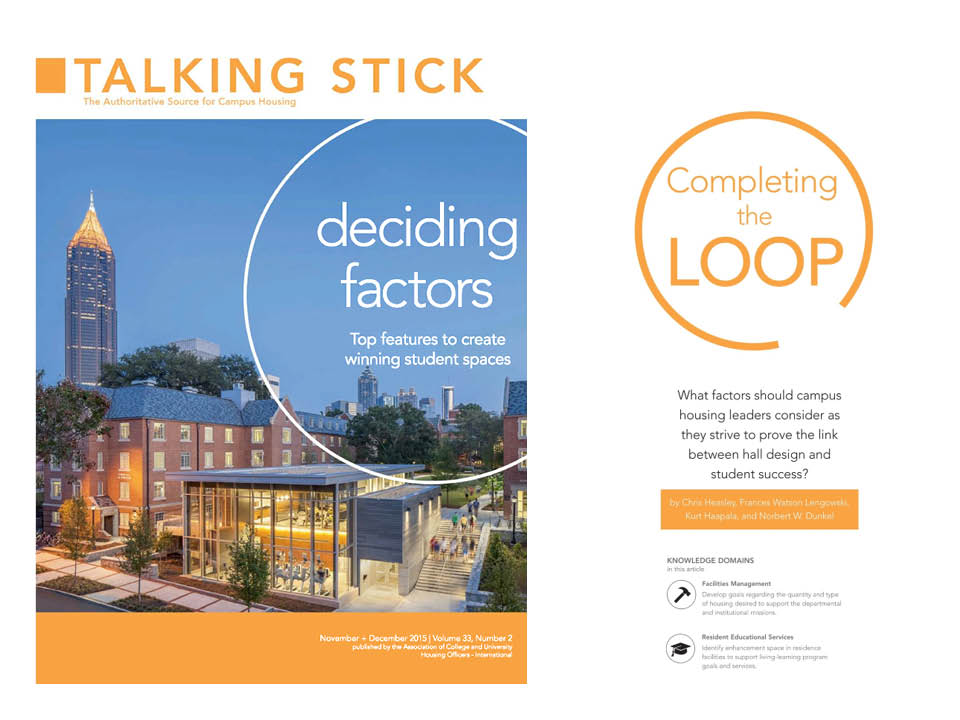
2. Who are the “Housing Officers” at ACUHO-I and why are they important to our work at VMDO?
These relationships are important to us because our work at VMDO is not just a commodity. Our work is committed to and rooted in relationships. Housing officers are remarkable people who work with vision for the student experience while also managing all the minute details it takes to manage facilities, challenging logistics, and complex university operations. ACUHO-I really helps us nurture relationships with housing officers – helping us understand their work, their concerns, and how our designs can operate effectively for their students and their campus context.
Every time I go to the ACUHO-I conference, I talk with people there and learn to think about residence halls in different ways. And for us, learning as much of this as possible is absolutely vital to our work at VMDO
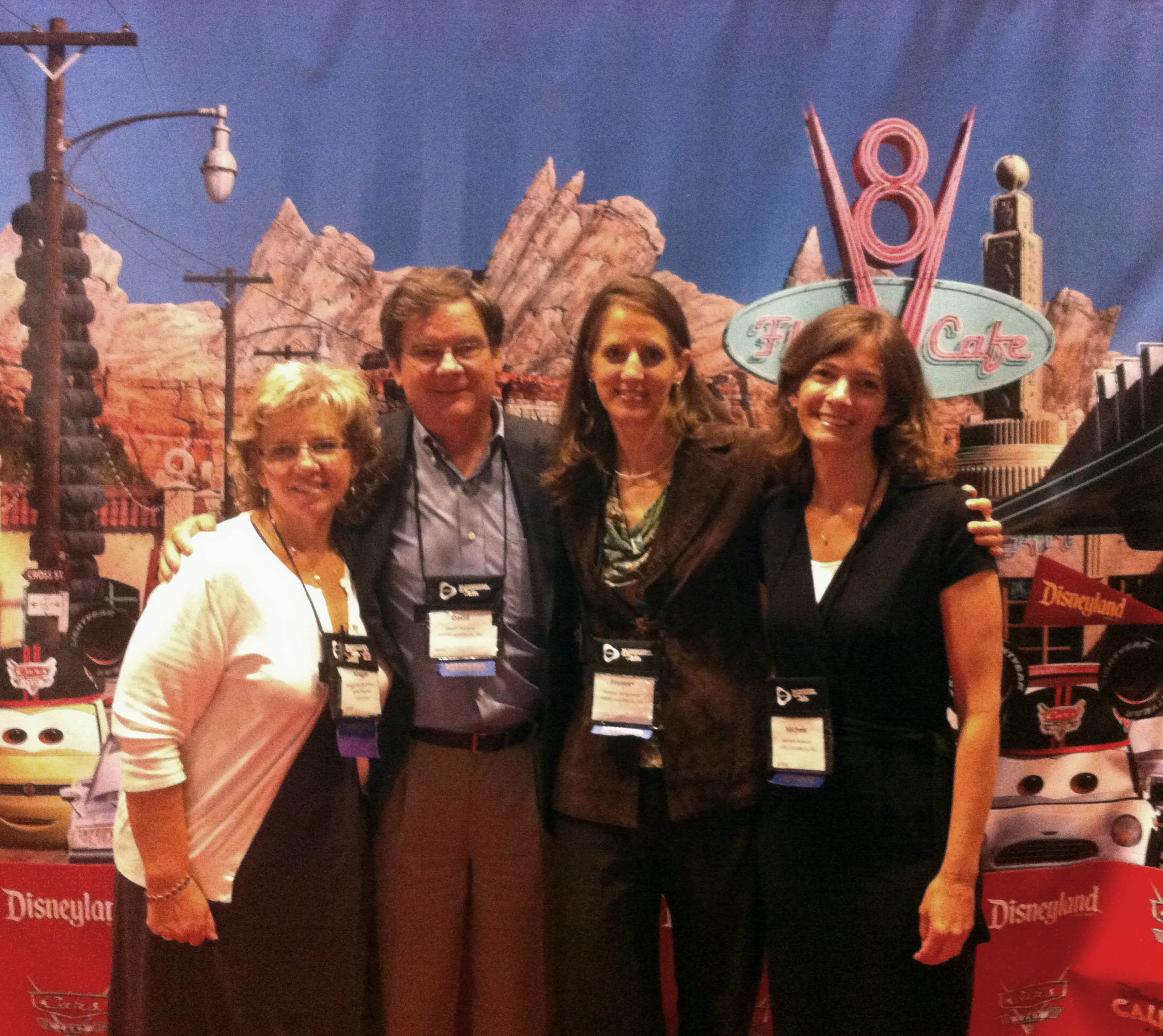
3. This was my first year attending ACUHO-I and I met so many people who told me how well deserved your receipt of the Earl S. Thompson Award was this year. How did that outpouring of support make you feel?
There's an immediate gratitude that I feel from those relationships and connections. For me it's interesting because, you know, I'm an architect; I'm trained as an architect. But so much of the work that I've been drawn to through ACUHO-I is not necessarily directly architectural. So, sometimes I feel like I'm out on a limb because the work that I do with ACUHO-I is not about architectural production or learning to detail a building better necessarily. But it's teaching me how important the detailing of the building is to the people that we serve. So the award was an honor because in many ways it validated my time with ACUHO-I – those years of attending the conference, conducting research, and working together is valuable in helping us think about the impact of our buildings, and how we can shape a living environment to positively affect the student experience.
4. What are some of the key issues for Housing Officers and how do you see your role in supporting them in their efforts?
One key issue for them is how to be heard on campus. Housing officers are the experts in their field. They know what their students want and need, and they know how the built environment affects them in tangible ways. And yet, when a university decides they want to build a new residence hall, sometimes the control doesn't lie with the housing officers directly. So, I think one important way to support housing officers involves helping them have an amplified voice in the visioning of new residential spaces. That's one of the reasons why I'm really interested in research that supports or empowers housing officers within the design of new facilities.
For example, I’m interested in gaining a better understanding of the impact of unit type on student experience. We know that students who are more engaged socially and academically are more successful. It follows that residence halls that promote social and academic engagement will in turn support student success. We know that, and yet we don’t have great data to help us prove what halls – what design features – promote social and academic engagement. I care about developing this data, because it will help housing officers make the case for building residence halls that support student success.Right now, the case is informed by professional experience, but it hasn’t been empirically proven yet. I'm interested in equipping student affairs professionals – and architects – with the right information to help make the case for the kinds of environments that impact students in powerful ways.
5. What are some of the collaborations or relationships that have inspired you recently?
There are so many people and collaborations that come to mind. Overall, the depth of knowledge is inspiring to me. I just love hearing housing officers talk with nuance about their programs and experiences. Right now, I’m inspired by the work we are wrapping up with Tina Horvath and Chad Doering of the University of Florida, completing their Housing Master Plan. They are at the helm of charting an inspiring vision for a huge housing system for a university doing everything it can to elevate its national preeminence. Tina and Chad have guided us to be equal parts pragmatic and ambitious. It’s been wonderful to work with them – and with our partners at Brailsford & Dunlavey.
Also, I have a personal passion for sustainability – fueled by the leadership of Maggie Burkhart Evans when she was with James Madison University. And I love building on this focus with people like April Konvalinka, at the University of Central Florida. I get excited when I see April because we've literally been talking for years about a mutual passion and interest in sustainability, and in health and wellness. Like many of my friends at ACUHO-I, April is a fountain of knowledge. I hope to be able to work with her soon on implementing these ideas.
6. Many people at ACUHO-I told me how collaborative and inspirational you are. How have some of your past collaborations from ACUHO-I helped inform your current work with VMDO?
Well, I’ve known Suzanne Price from Clemson University through VMDO’s Core Campus Housing Project there, and also from other ACUHO-I conferences. We then did a research project together. So I was able to learn alongside Suzanne about how that design impacted their students’ experience. Her perspective is helping us at VMDO think critically about how to apply those lessons into new designs.
Additionally, that research with Suzanne, which became a Talking Stick article, subsequently informed the main questions for the Housing Master Plan for the University of Florida. There, we did a comprehensive literature review in collaboration with Dr. Karen Inkles from the University of Virginia. We were able to identify three key elements from the evidence within the literature of how building design is impacting student success. So each and every connection from ACUHO-I continues to inform our current work at VMDO.
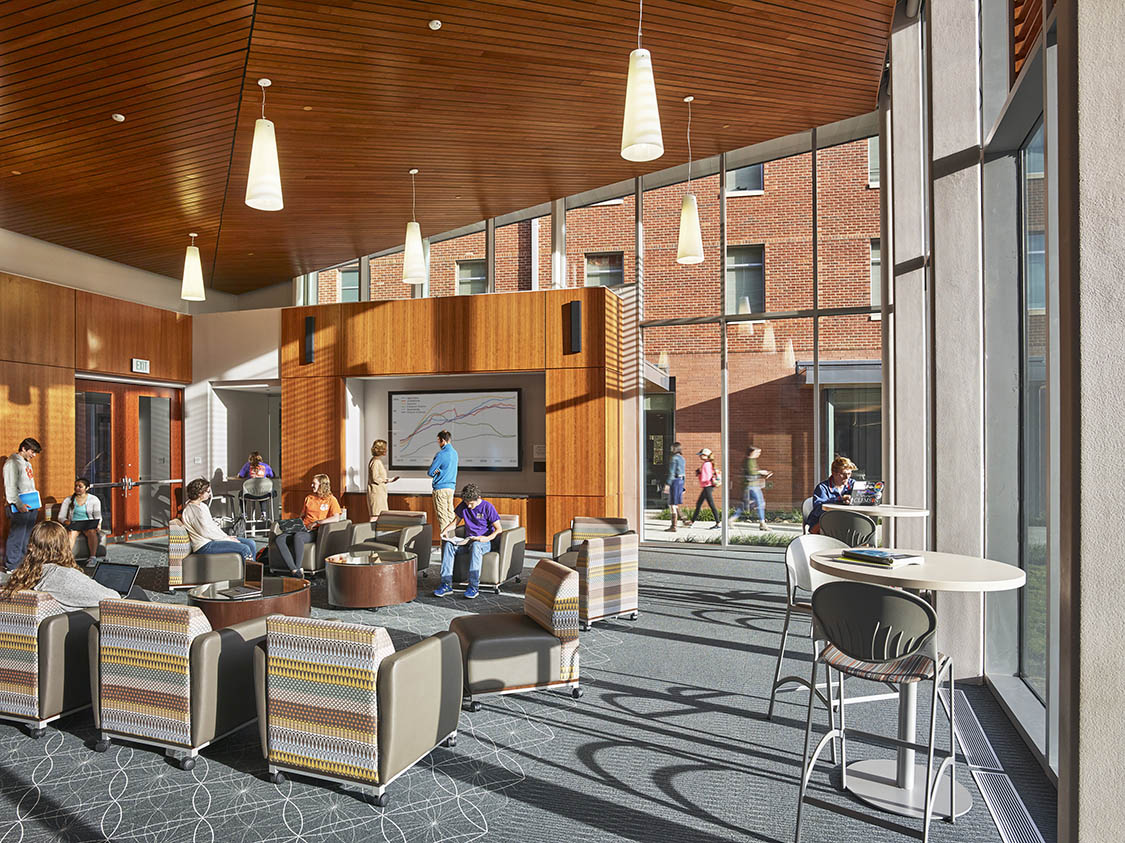
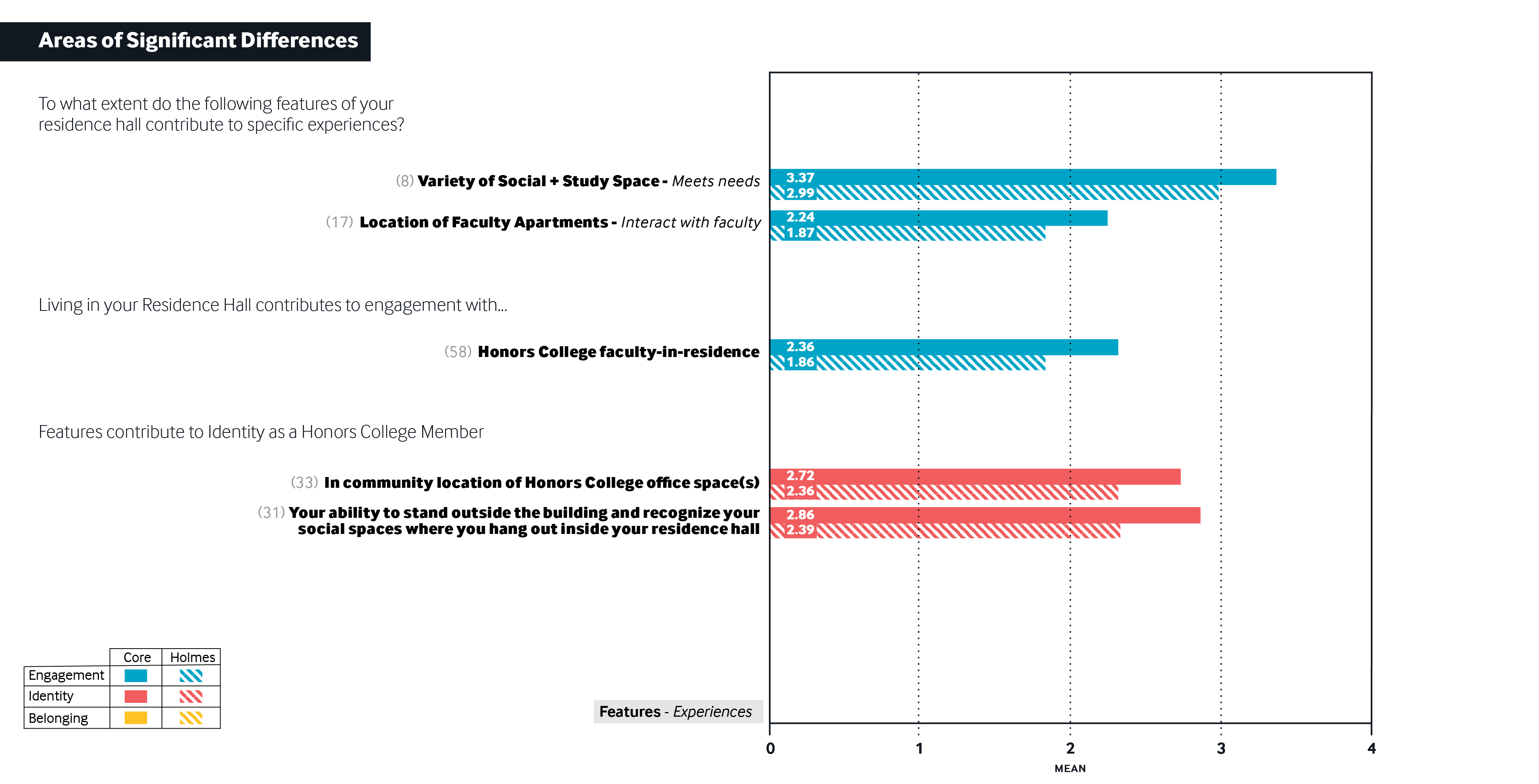
7. What is next for our related VMDO + ACUHO-I collaborations?
I always look forward to seeing friends and colleagues. That’s always the biggest highlight. But I'm also excited because we're now working at a different scale and doing work that's pushing the envelope. For example, for the University of Miami's Centennial Village, we are working with Jim Smart to make significant improvements to indoor air quality with technologies that are taking control of carbon dioxide levels in the residence hall, while also looking at some innovative approaches to circadian lighting, and even using chilled beams at a whole new scale.
Also, benchmarking for the University of Florida Housing Master Plan is going to lead to some exciting outcomes. We’ve dug into some detailed data about how other university housing systems are working to elevate the student experience and how that is all tied into larger goals for national preeminence and rankings at other universities. This will help inform the University of Florida's programming.
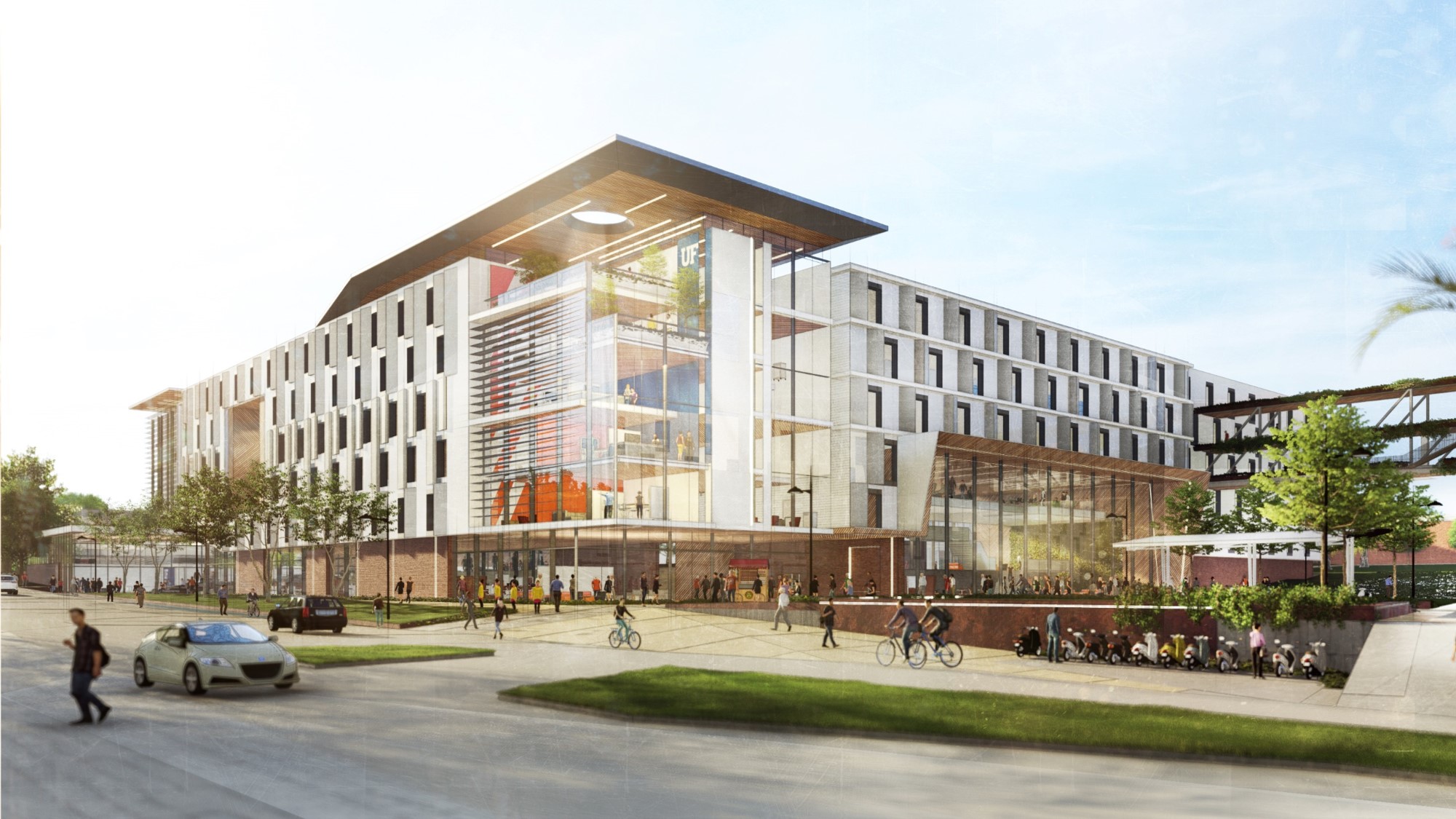
8. What are you looking forward to about future ACUHO-I gatherings?
Historically student housing has not been recognized as an important driver for institutional success. That's all starting to shift. We’re seeing that very clearly in our experience with the University of Florida. We're seeing that at the University of Miami where they're fully rebuilding the first-year experience in their housing program. We're seeing institutions recognize on a national scale that quality housing environments are part of an institution's commitment to student success. It’s exciting to see the growing recognition of the importance of student housing, and I look forward to seeing those themes emerge at future gatherings.
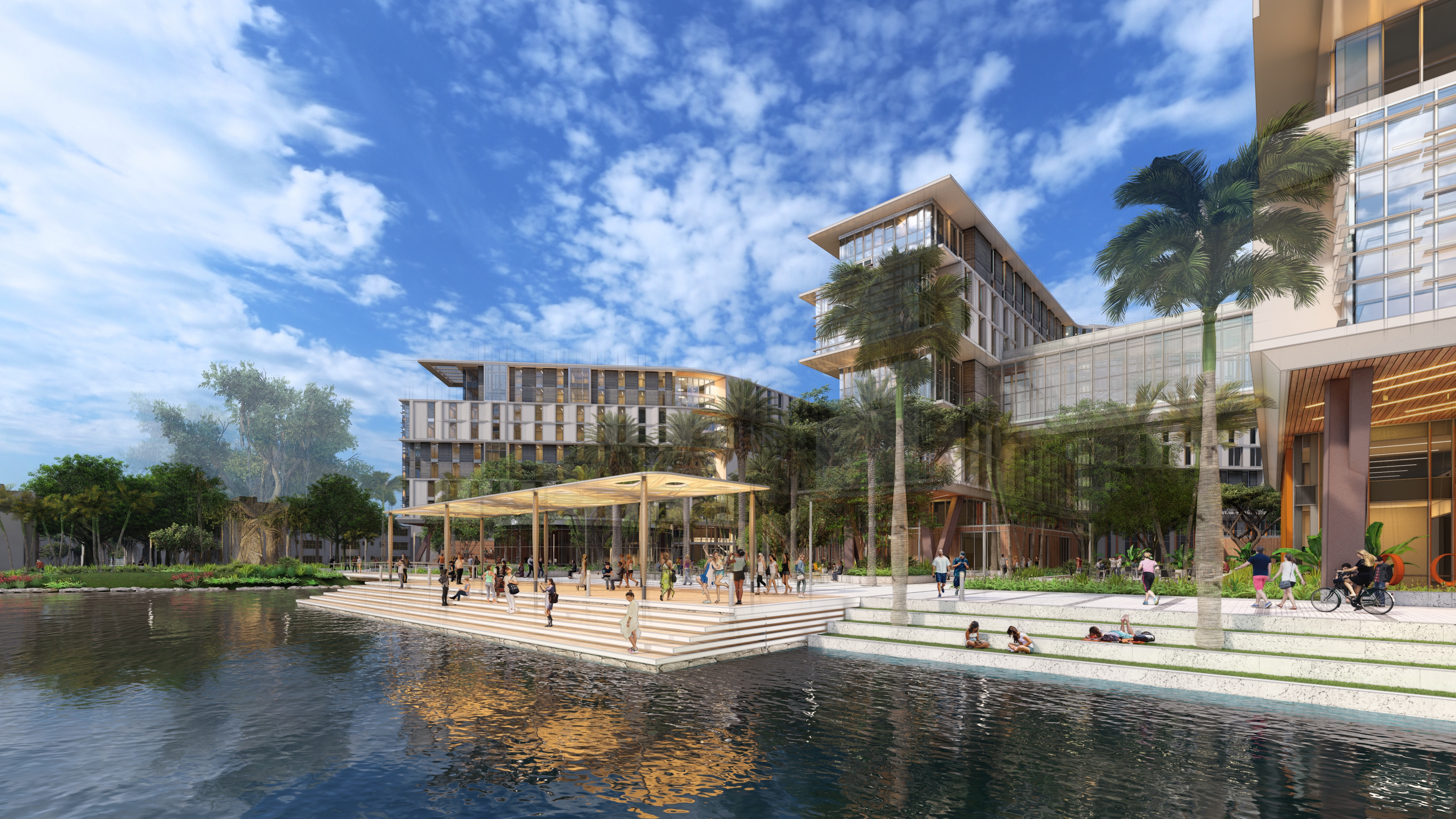
9. ACUHO-I collaborations and relationships are vital to our work at VMDO. Can you tell me about some of VMDO’s projects that grew from seeds planted at ACUHO-I?
So, for years, I've really enjoyed connecting with Jim Smart from the University of Miami. In 2016, I was grateful to do a workshop with Jim at a regional conference where he led his small group with energy and vision. I’ve really enjoyed connecting with him over the years. We were grateful to be invited to Miami’s First Year Residential Village design competition when that project came up. And, our involvement in the Miami competition led us to be involved in George Washington University’s Thurston Hall design competition, which has been an exciting and transformative project.
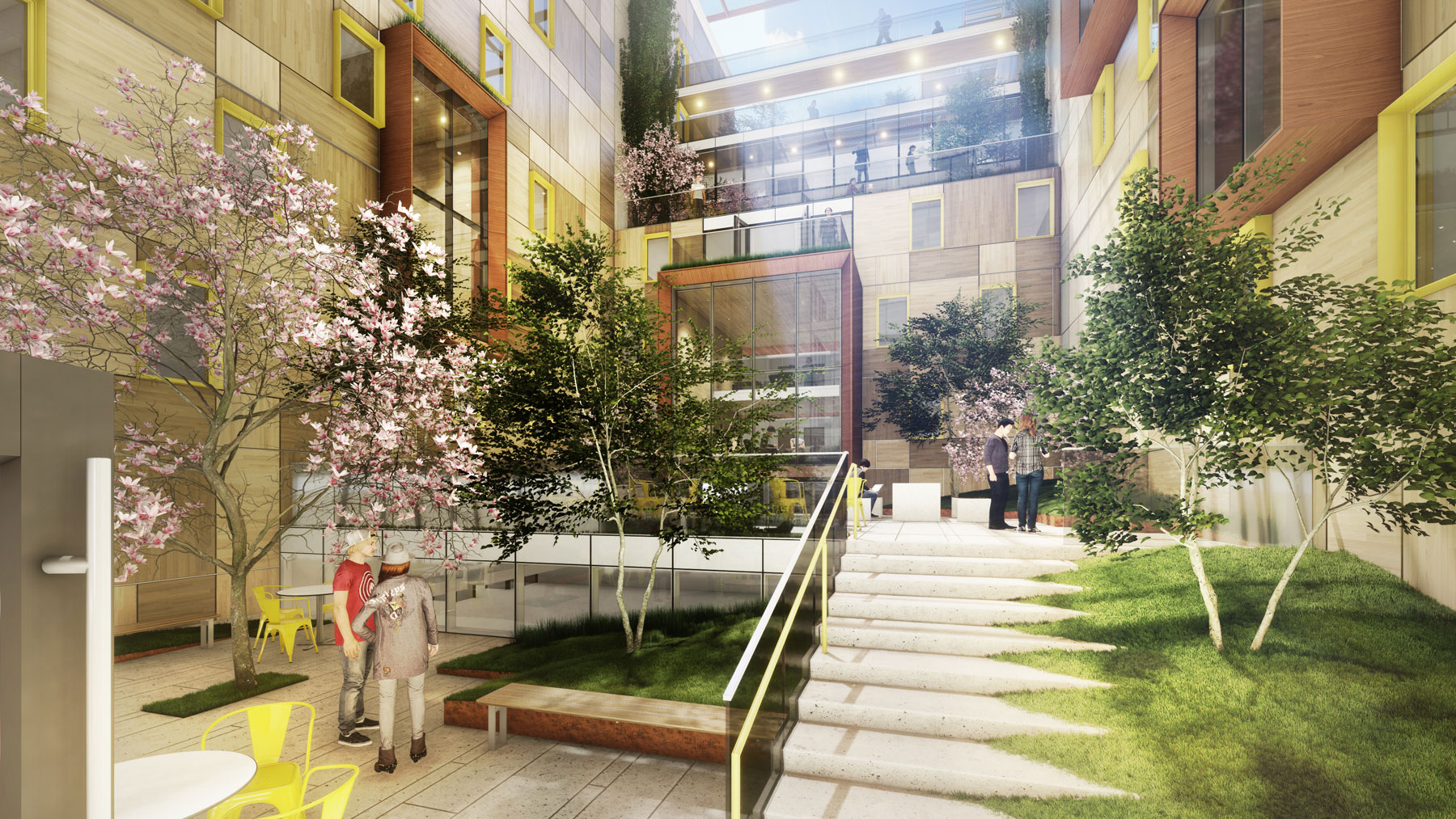
10. What does receiving the S. Earl Thompson Award from ACUHO-I mean to you and mean to your career?
I’m proud to be recognized as part of the ACUHO-I community. But, I also want to be very clear – this is not just my award. This is also a VMDO award. VMDO made the decision to donate my time to ACUHO-I and invest in the relationships, the committee work, the writing, and the many presentations and trips I’ve done over the years. And that's something that the firm decided was valuable, so I feel privileged to be a part of our firm’s decision. I'm very grateful to know that the work that we have invested in has found some meaning, or has been relevant to those who have known us.
